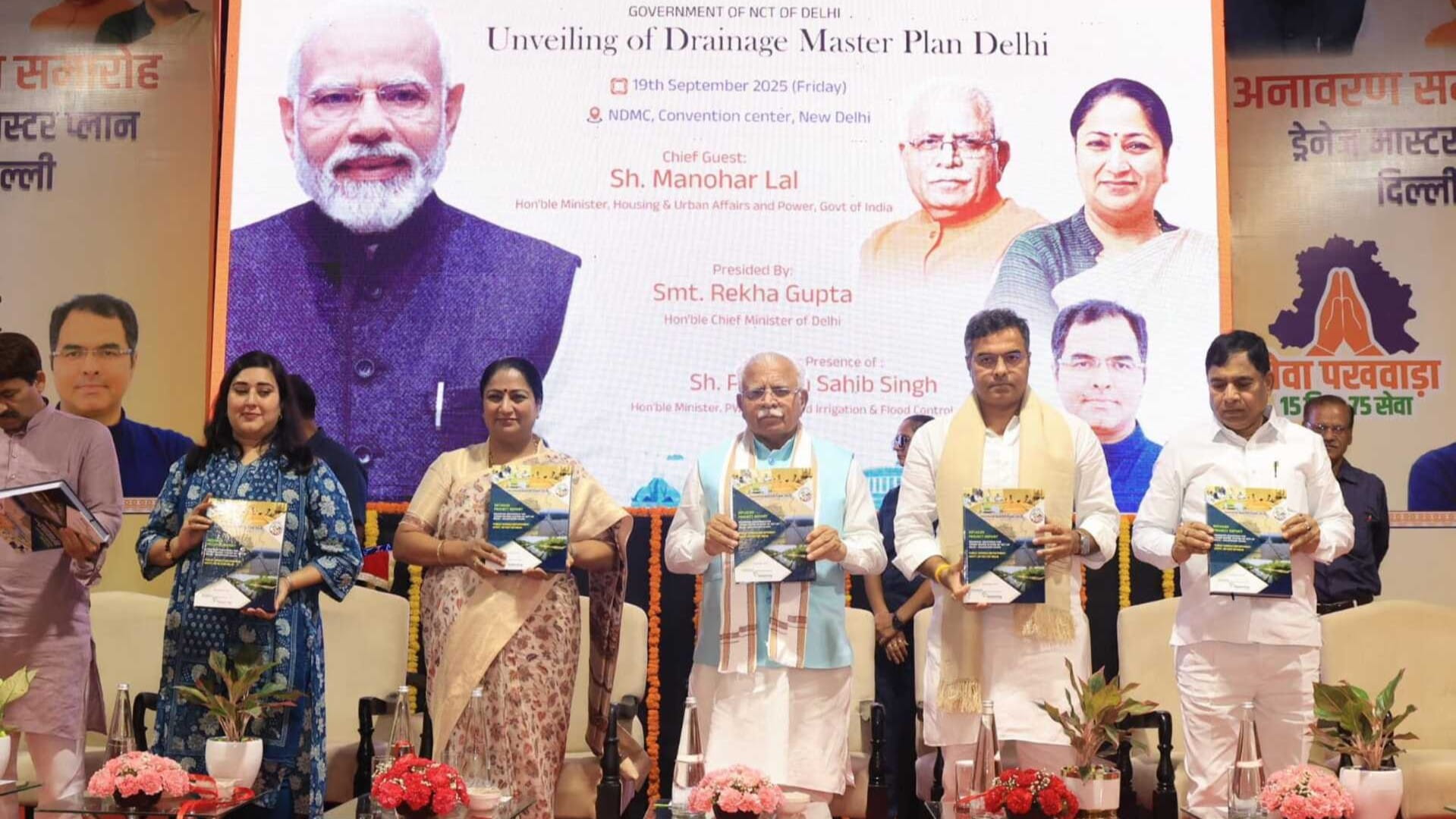Securing Delhi’s drainage with a comprehensive masterplan and DPR

On 19th September 2025, the Hon’ble Minister of Housing and Urban Affairs, Hon’ble Chief Minister, Hon’ble Cabinet Minister, MPs and Additional Chief Secretary unveiled a new Delhi Drainage Master Plan – valued at over ₹57,000 crore.
The plan addresses chronic waterlogging, enhances stormwater management, and strengthens climate resilience through nature-based solutions and inter-agency coordination. And it’s designed to secure Delhi’s drainage for three decades as urbanisation continues to grow and climate pressures, like monsoons, increase in frequency and severity.
Delhi’s drainage systems were due an upgrade
The last time Delhi overhauled its drainage systems was 1976, a time when the region looked very different – and faced different challenges. It had a population of just 6,500,000 compared to 25,000,000 today, and a rainfall of just 25 mm/hr – significantly less than the 65 mm/hr now seen in the region.
To offset population growth and increased precipitation – and protect Delhi from the future impacts of urbanisation and climate change – the government of Delhi’s Public Works Department unveiled the initiative to overhaul and expand the city’s drainage networks.
Haskoning was commissioned early in the project. We conducted an array of feasibility studies and field surveys across Delhi’s three main drainage basins: Najafgarh, Kanjhawala, and Alipur. Combined, the city contains 46 natural drains with a total drainage network of approximately 11,000 km.
Our team worked closely with Delhi Government to contribute our global expertise in water management, climate resilience, and sustainable urban infrastructure. We helped design the city’s drainage network, leveraging advanced hydraulic modelling, nature-based solutions, and smart monitoring systems – including smart sensors that feed into a central control hub.
This will support authorities to anticipate choke points before they escalate and cause leaks or flooding.
To eliminate waterlogging and improve stormwater management, we proposed a five-phase implementation under the Delhi Drainage Master Plan with each phase focussing on different areas.
For example, in the Najafgarh Basin, key planned actions include:
- Remodelling 90km of drain network
- Fixing 40 identified waterlogging hotspots
- Building silt traps and dedicated pumping stations
- Reviving Bhalswa Lake to increase water storage capacity
- Creating 11 groundwater zones
- Implementing automated pumping stations for centralised control and monitoring
This phased approach aims to create a resilient, efficient, and environmentally sustainable drainage system that can serve as a model for other urban regions facing similar challenges.
Securing the future of Delhi’s drainage
Once implemented, the new drainage masterplan will triple capacity from 25 mm/hr of rainfall to 70 mm/hr. This will protect the city increasingly severe monsoon seasons and an estimated 11% rise in rainfall intensity due to climate change.
Moving forward, Haskoning will also be supporting with the next phases of the project, providing construction support and supervision through to 2027. It’s been a pleasure to work on this project, and we’re excited to see it come to fruition.

Securing Delhi’s future begins beneath our feet—where resilient, sustainable drainage systems protect our people, preserve our natural drains, water bodies, and prepare our city for tomorrow’s climate.
Want to know moreor got a question?
Contact our Climate Resilience experts!